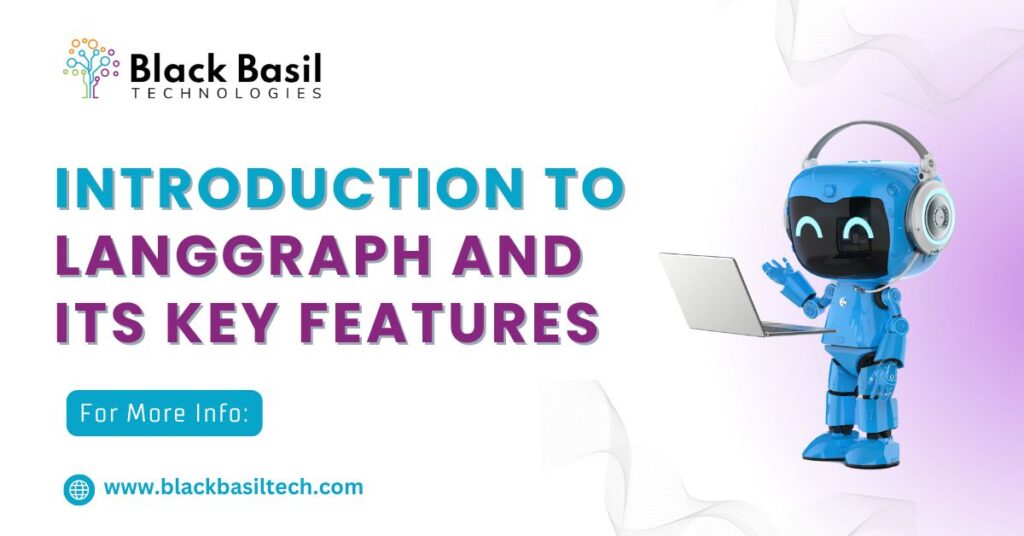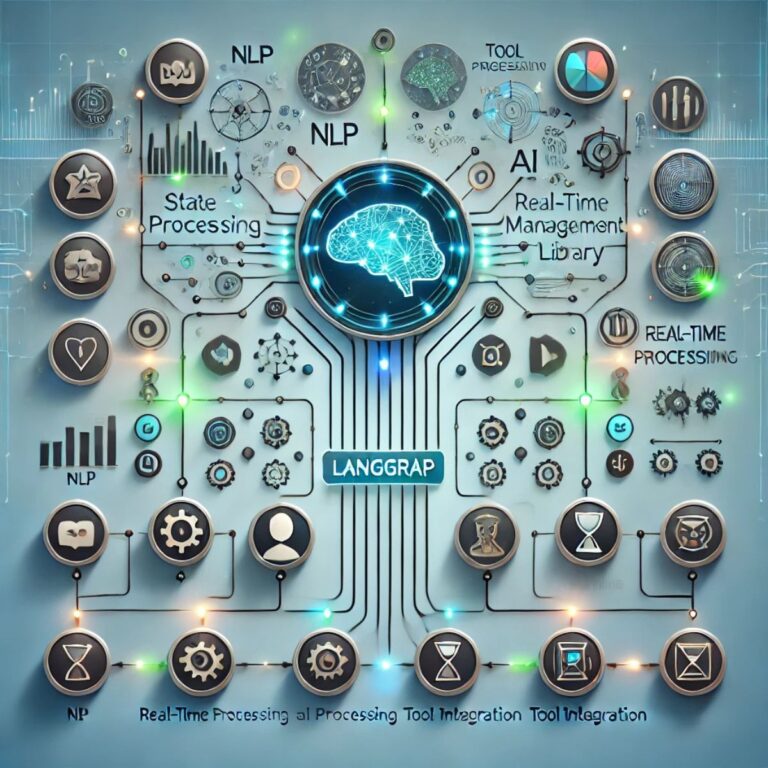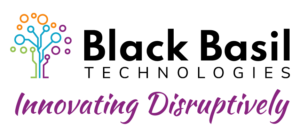
What is LangGraph? Introduction to LangGraph
While navigating complex workflows, effective management of state transitions by an artificial agent is a prerequisite. Thus, LangGraph is a powerful library focused specifically on state management in AI applications. Developers are enabled to easily define, control, and move between many states so that their AI agents may simultaneously and swiftly perform several tasks. Core to LangGraph are state graphs his architecture is comprised of nodes interlinked that represent states plus transitions resulting from certain conditions. Task management becomes easier with this structure; adaptability is enhanced along with real-time monitoring making LangGraph an integral part of any scalable yet resilient AI system engineering.
What is LangGraph Used For?
LangGraph is especially useful for developers who need a flexible and configurable state management system that supports error handling, recovery, and real-time monitoring of data. Wherever used—in chatbots, analysis of customer feedback, or content recommendation engines—LangGraph helps build responsive and adaptive AI applications. Moreover, the architecture built on LangGraph includes real-time visualization so that developers can gain insightful information about state changes and how AI processes flow and operate.
Key Features of LangGraph
LangGraph is especially useful for developers who need a flexible and configurable state management system that supports error handling, recovery, and real-time monitoring of data. Wherever used—in chatbots, analysis of customer feedback, or content recommendation engines—LangGraph helps build responsive and adaptive AI applications. Moreover, the architecture built on LangGraph includes real-time visualization so that developers can gain insightful information about state changes and how AI processes flow and operate.
Data Flow: LangGraph supports a well-defined, structured flow of data, which improves the strong description and simplicity of state transition tracing.
Modular Architecture: Modular architecture in LangGraph enables easy customization and extension of the framework. This would mean developers may adapt LangGraph for any wide scope of applications without losing functionality. NLP Capability: Integrated NLP tools mean LangGraph can perform operations like sentiment analysis, entity recognition, and text classification. This gives the API to be used for AI applications based on language understanding, such as customer feedback analysis and content moderation. User-Friendly Interface: LangGraph is intuitive and user-friendly; this power tool is accessible to even the new developer, while the seasoned developer will love the ease of access. Simplicity makes learning steeper and accelerates development.
Real-Time Processing: LangGraph needs to be able to process data in real-time: immediate responses are sometimes essential-applications range from customer support from AI agents to monitoring on social media. As a result, the insight comes in on time as the users have user-centric interaction.
Integration with Other Tools: LangGraph is not very difficult to integrate into the popular frameworks and quite several data visualization libraries; the developers can benefit from already-crafted tools in the LangGraph ecosystem. Community and Support: LangGraph has an active community of resources, forums, and documentation. The supportive environment allows developers to troubleshoot issues, share best practices, and keep updated on the latest developments in LangGraph.
Modular Architecture: Modular architecture in LangGraph enables easy customization and extension of the framework. This would mean developers may adapt LangGraph for any wide scope of applications without losing functionality. NLP Capability: Integrated NLP tools mean LangGraph can perform operations like sentiment analysis, entity recognition, and text classification. This gives the API to be used for AI applications based on language understanding, such as customer feedback analysis and content moderation. User-Friendly Interface: LangGraph is intuitive and user-friendly; this power tool is accessible to even the new developer, while the seasoned developer will love the ease of access. Simplicity makes learning steeper and accelerates development.
Real-Time Processing: LangGraph needs to be able to process data in real-time: immediate responses are sometimes essential-applications range from customer support from AI agents to monitoring on social media. As a result, the insight comes in on time as the users have user-centric interaction.
Integration with Other Tools: LangGraph is not very difficult to integrate into the popular frameworks and quite several data visualization libraries; the developers can benefit from already-crafted tools in the LangGraph ecosystem. Community and Support: LangGraph has an active community of resources, forums, and documentation. The supportive environment allows developers to troubleshoot issues, share best practices, and keep updated on the latest developments in LangGraph.
What is a Checkpoint in LangGraph?
By checkpoints, one basically means a definite point in the process of state management in LangGraph, which allows developers to capture the workflow at that point. Checkpoints are mainly useful when one wants to restart the workflow as far as possible if some unexpected problem or anomaly occurs. This is basically very helpful to treat error and to facilitate troubleshooting of AI agents. Complex workflows then guarantee resilience and continuance, thus adding another layer of reliability in the architecture of LangGraph.

Is LangGraph free?
LangGraph is open-source and thus free to use, accessible to developers and organizations of all sizes. An open-access approach like that encourages growth in the community along with good collaboration and continuous improvements as might be needed. This is very ideal for the focused developer in creating AI-driven applications without any upfront costs.
Real-World Use Cases of LangGraph
- Chatbots: The NLP capabilities of LangGraph enable its use in chatbots with capabilities for the return of natural, context-aware responses to customers, thereby improving the quality of all interactions.
- Customer Feedback Analysis: Further, the analysis of customer feedback is easy with LangGraph since it provides capabilities of sentiment analysis and entity recognition. An organization can measure its customers’ satisfaction levels through these analyses.
- Content Recommendation Systems: The state management and real-time processing make LangGraph suitable for recommendation engines, which show the users content they might be interested in.
Future LangGraph Developments
LangGraph is shortly going to undergo new updates that further enhance the state management capabilities and different AI framework integrations. Potential features might include more advanced functionality of NLP and some more effective visualization tools for developers, thereby building more responsive and adaptable AI applications. As language processing technology evolves forward, LangGraph is on a good point to be well-positioned at the center of all these new things which can be shaped by developers into innovative and scalable AI solutions.
Final Thought
The reason why LangGraph is the most useful tool for AI developers is because it merges the real-time processing with modular design and a community-driven approach, along with the power of state management. This, with its extensive NLP capabilities and integration options and community support, is making LangGraph head the race for next-generation AI applications. Whether you want to create a chatbot, a recommendation system, or even an analysis tool using feedback, LangGraph will definitely help the developer get past all the complex workflows and make robust AI solutions, handle state management, and have it easy.

I am a data scientist with a strong background in conducting impactful research in computer vision, artificial intelligence (AI), and machine learning (ML), including work with large language models. Currently, I am employed at a leading AI company, where I specialize in developing and deploying computer vision projects, large language model applications, API integrations, and cloud-based solutions.
DataScientist, Blackbasil Technologies
Hello

